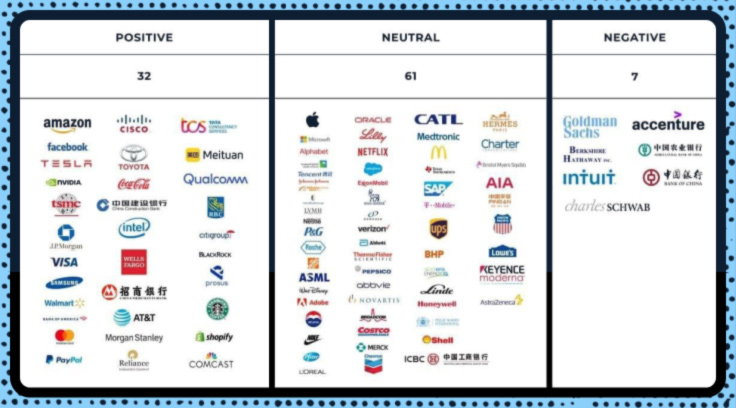The “perfect storm” in the markets in 2020 spurred their activities. Surprisingly, Bitcoin and some other cryptocurrencies became some sort of a “safe haven” for investors against inflation during the COVID-19 pandemic. The mid-2020 survey by Fidelity Digital Assets showed that about 36% of institutional investors in the U.S. and Europe had already purchased crypto assets, while about 60% of those surveyed considered crypto as a potential asset class in their portfolio.
2021 showed the active growth of institutional investments on the crypto market: the volume of institutional trading on the Coinbase Global exchange exceeded $1.14 trillion. A year earlier, this volume was 10 times less. In addition, institutional investors traded twice more than retail investors in the same year, who counted for only $535 billion.
A September 2021 study from Fidelity Digital Assets showed that institutional investors which already invested in crypto increased their share to 52%. There was also a significant shift in attitude toward cryptocurrencies, with 70% of investors perceiving them positively, where almost all institutions from Asia expressed a willingness to add digital assets to their portfolios.
The annual PwC Global Crypto Hedge Fund report also made it clear that cryptocurrency hedge funds grew their investments in digital assets to $4.1 billion in 2021, with a year-over-year increase of 8%. However, it is worth noting that half of the hedge funds were cautious and invested less than 1% of their total assets under management (AUM) in these instruments.
Institutional adoption of crypto in 2022

At the peak of the crypto bull market, bitcoin maximalists made utopian forecasts regarding the collapse of the old financial system and the widespread adoption of new assets. However, 2022 showed that the global idea of cryptocurrency rolled back to the usual financial mechanisms and it certainly led to a failure.
The market reversal and subsequent collapse of Terra, 3AC, and FTX put pressure on the crypto community and also on institutions which were bold to enter the markets. It is still difficult to assess the reputational impact, but despite the circumstances, institutional investors were very willing to further participate in the market development, cautiously assessing the risks.
Despite the negative market sentiment of 2022, Fidelity’s study showed that the number of institutional investors investing in digital assets rose to 58%. Some investors claimed that digital assets make up more than 50% of their portfolios. Moreover, 81% of those surveyed expressed the opinion that digital assets should definitely be part of a portfolio. It turns out that many institutions do not own, but are already considering investing in cryptocurrency assets. It is also worth noting the exponential interest of venture capital and hedge funds – according to the study, of the total volume of “interested,” only 12% have owned crypto assets for two years or more.
The Blockdata research is also worth paying attention to – it shows that the positive stance on crypto assets is spreading among the top 100 public companies as well.

The global growth of cryptocurrency adoption in the retail segment is also inspiring. According to Chainalysis, despite the general bearish mood, the penetration of cryptocurrencies into retail markets and its growing popularity among common users is gaining momentum. Long-term investors continue to HODL, and developing countries are the ones most interested in the global adoption of cryptocurrencies. These circumstances will influence institutional decisions in 2023, which consider high risk, but surely cannot avoid the potential of digital assets.
Challenges for Institutional Investors in 2023

Among the major concerns for institutional investors, most researchers name:
- high volatility;
- lack of proper regulation;
- the likelihood of financial destabilization.
Volatility is a pretty obvious reason as it’s a general feature of the crypto market. The situation is unclear with the regulation: authorities around the world can’t come to a conclusion about whether digital assets are securities, money, commodities or other forms of property. Most funds and investors believe that the development of a legal framework will provide relative stability, gradually reduce market volatility and increase investor confidence in the industry. However, overly harsh statements from regulators could discourage institutional investors from further investing in the crypto market.
Despite all other challenges, it seems that the biggest problem of 2023 for institutional investors will be present outside the digital asset market because a crisis on a much larger scale is looming.
While the crypto market is still recovering after the turbulence and collapse of companies in 2022, several banks, in one way or another affiliated with tech startups and blockchain companies, are in the spotlight at the end of the first quarter of 2023.
Silvergate Bank was the first to suffer, being the second-largest digital asset bank in the United States. It acted as one of the main crypto-to-fiat gateways: its Silvergate Exchange Network (SEN) was a crucial solution for transactions that took place 24/7. Its turnover reached a record $787 billion in 2021, but that volume dropped significantly when the market went down. The sustainability of Silvergate didn’t pass the test, unfortunately – the bank’s partners were 90% digital asset companies. In early March, it became known that Silvergate Bank was winding down its operations and going into voluntary liquidation.
But that was just a start. In a few days, problems arose at two other important financial institutions for the industry – Signature Bank and Silicon Valley Bank, which also suspended operations under “bank-run” pressure. To be more precise, the financial regulators did it, without waiting for the real collapse, which was regarded by experts as a “show of force”.
The situation with SVB forced the U.S. Federal Reserve to intervene. The authority made a statement that the Central Bank will solve any problems with liquidity and depositors will have full access to deposits through The Bank Term Funding Program (BTFP). Nevertheless, it did not calm the investors: on Monday, March 13 the stock market experienced a“bloodbath” against the background of panic sales. The fall of SVB led to a series of problems for a huge number of technology companies. This bankruptcy is recognized as the second largest in U.S. history after the precedent of the Washington Mutual Bank in 2008.
The situation around Silvergate and Signature is even more complex when it comes to digital assets. Many experts have called it a strategic loss of critical infrastructure for the crypto industry. Due to the exclusion of these financial agents from the markets, many major players are experiencing great difficulties with crypto-fiat transactions.
The current state of the U.S. financial market makes investors at all levels nervous – nobody understands how to hedge against losses. Cal Evans, a lawyer in the field of technological and crypto projects, said in a comment for CP Media that due to the fact that cryptocurrencies are the riskiest asset class, they will be sold first in case a new crisis wave in the markets erupts. This can lead to the most unpredictable consequences for the market. Stablecoin issuers have already felt the pressure: the USDC stablecoin temporarily lost its peg to the US dollar, and from March 13 to 15, its capitalization dwindled by $3 billion, all amid the SVB case.
To sum up, the crypto market remains an attractive field for institutional investors, and the number of companies looking for ways to enter is only growing. However, many market participants are stopped by their own risk-management requirements and frames: the lack of guarantees from many points of view forces them to wait. In general, it conjures up the old proverb “honey is sweet, but the bee stings.” Nevertheless, the trembling of the largest banks urges one essential question to be asked out loud: are you sure that your investments in traditional assets are really protected?










